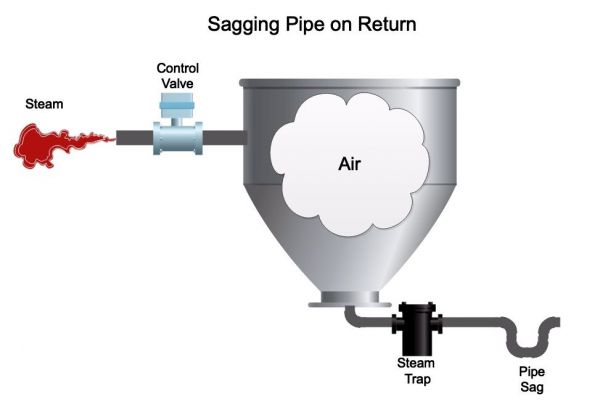This all-technical, three-hour seminar will make you familiar with the many types of old steam heating systems and what goes wrong with them. Dan Holohan’s easy-to-follow...
Troubleshooting Steam Heating Systems
Dan Holohan, probably the smartest person I know on steam, has a saying, "The problem and the solution are rarely in the same room with steam." That holds true I have found. I was called to diagnose a steam radiator which stopped heating. By the time I arrived, they had replaced the steam trap twice, and the steam shutoff valve once and still had a problem. The staff told me that after replacing the components, the radiator would heat for only a short time.
The first question I asked was, how long has this been occurring? They informed me it started a few weeks ago. My second question was, What work was done on the system during that time? They said no piping was changed. My first thought was someone removed the insulation from a steam pipe causing the steam to condense too quickly and pulling the piping into a small vacuum. That was not the case with this radiator.
I removed the radiator cover and waited. Air rushed out followed by steam. "I tried that after you suggested it and it only heated for a little bit," the tech said. "Exactly Watson," I wanted to say. I am a huge Sherlock Holmes fan. I explained that we eliminated the steam side of the system as the problem because we could see steam puffing from the radiator pipe.
"We should find the solution on the return side of the system, " I explained. We traced the pipes down to the first floor and saw they went into a crawlspace under the floor. We crawled through the crawlspace and located the pipe. Inside the crawlspace, it went into an elbow and horizontal pipe. We traced the pipe with our flashlights and found the problem. One of the pipe hangers had come loose, and the pipe dipped forming a water seal. We were able to lift the pipe and reattach the hanger, so there was no longer a dip. This resolved the problem.

To understand how this happened, remember one of the basic tenets of science is that two gasses cannot occupy the same space. In this case, steam and air, both gases, cannot occupy the same area. When the radiator was cool, it was filled with air. As steam approached the radiator, the air could not leave because of the sagging pipe. Since the air could not leave, the steam could not enter. The trap formed by the sagging pipe in the crawlspace is similar to the one under your sink at home. That trap is there to keep the odors in the drain pipes from coming back into the house. By raising the pipe and putting it back into the hanger, the trap was eliminated; the air could leave, and the steam could enter the radiator. If you are having an issue with a vessel not heating, most of the time it will be on the return or condensate side. Look for sagging pipes where a water seal or trap could form. Have fun with the troubleshooting and like Sherlock Holmes says, The game is afoot.
Would you like to learn more from Ray Wohlfarth? Check out his seminars, books, and blog about brewing with steam.
Leave a comment
Related Posts
We always have turkey for Thanksgiving. I mean who doesn’t? My job wasn’t to cook it, though; it was to eat it.
I had written a story for Plumbing & Mechanical a while back about a fella in Canada who sent me this email: "Our problem is that five out of hundreds of univentilator co...